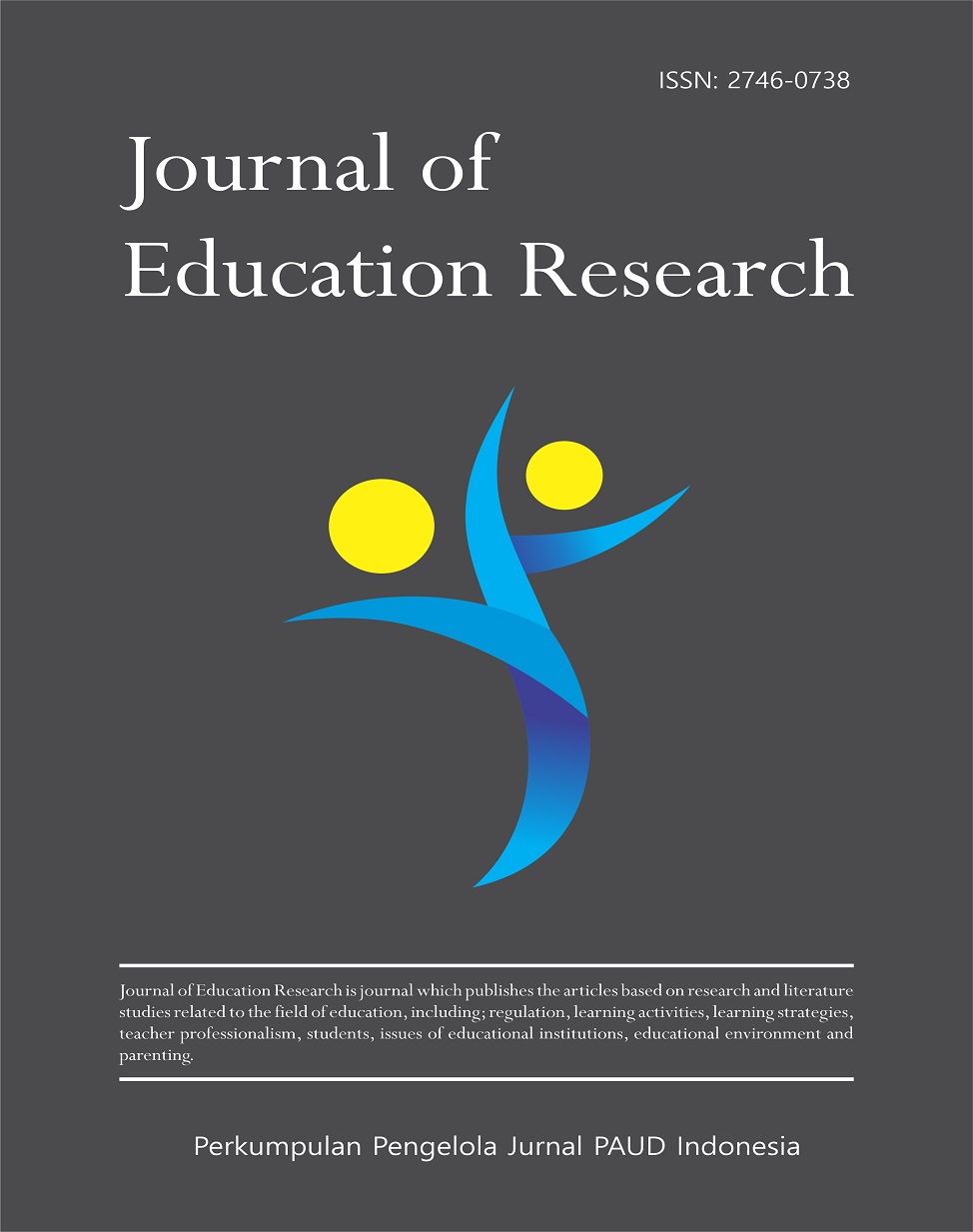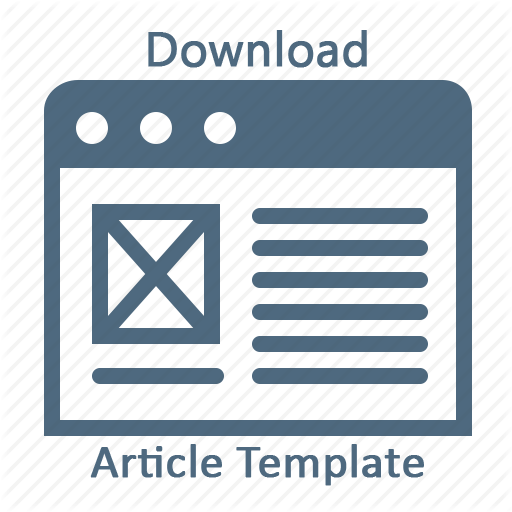Analysing the Illucutionary Speech Act in Underrated Characters of the Animated Film Luck
DOI:
https://doi.org/10.37985/jer.v6i3.2611Keywords:
Illucutionary Speech Act, Animated Film Luck, Underrated CharactersAbstract
This qualitative study investigates the functional realization of illocutionary acts by secondary characters in the animated film Luck, focusing on pragmalinguistic patterns in their dialogue. The researchers identified relevant characters by analyzing user-generated viewer comments, then extracted and segmented their scripted utterances for pragmatic analysis. The study aims to deepen theoretical understanding of illocutionary acts in non-central characters—an underexplored area in speech act research—and to offer new insights into character construction through language. The researchers applied Searle’s (1976) taxonomy of illocutionary acts and operationalized the analysis using Miles, Huberman, and Saldaña’s (2014) interactive model of data condensation, display, and conclusion drawing. They analyzed the illocutionary functions of Sam and Bob in relation to their narrative roles and interpersonal strategies within the film’s discourse. The analysis identified four categories of illocutionary acts that serve specific character-building functions. Sam predominantly used expressive and directive acts, highlighting her desire to escape the misfortune that shapes her identity. In contrast, Bob consistently used assertive acts, conveying information and opinions with clarity and confidence. Theoretically, the study enhances our understanding of how illocutionary acts shape character identity in animated narratives, a domain where pragmatic functions often receive limited attention. Practically, the findings provide valuable input for English educators and learners by illustrating the real-world application of speech acts in emotionally nuanced contexts.
Downloads
References
Abushalla, A. (2023). Difference between commentary article and other (research and review) articles?
Aiche, S. (2024). Difference between commentary article and other (research and review) articles?
Aji, K. R., Mubais, A., & Rosdiana, A. (2025). From dependence to autonomy: EFL students’ strategic engagement with grammarly. Acceleration: Multidisciplinary Research Journal, 03(01), 45–52. https://doi.org/10.70210/amrj.v3i1.133
Andarwulan, T., Ibrahim, A. S., Suparno, & Martutik. (2021). Teacher’s language input for recognizing the cognitive abilities of autistic student in classroom interaction. European Journal of Educational Research, 10(2), 593–606. https://doi.org/10.12973/EU-JER.10.2.593
Aprilia, L., & Dewi, E. K. (2022). the Functions of Illocutionary Acts in Finding Nemo Film. SIGEH ELT : Journal of Literature and Linguistics, 2(1), 41–48. https://doi.org/10.36269/sigeh.v2i1.776
Arnoi, K. N., Safi’i, M., & Bastian, A. A. (2024). Pragmatic study: illocutionary acts in “Yowes Ben 2” Movie. AIJELT: Aisyah Journal of English Language Teaching, 15(1), 72–86. https://doi.org/10.25130/sc.24.1.6
Astuti, R. W. (2018). The use of illocutionary acts in Jessie Nelson’s I am Sam. English Language & Literature Journal, 7(7), 694–702. https://journal.student.uny.ac.id/ojs/index.php/quill/article/view/14576
Austin, J. L. (1962). How to do things with word. In Oxford At the Clarendon Press. Oxford.
Defiyanti, E., Budiman, T. C. S., & Suwarti, T. S. (2024). The Use Of Illocutionary Acts In Aladdin Movie Script As The Contribution To The Learning Of Pragmatics. Proceeding of English Teaching, Literature and Linguistic (Eternal) Conference, 4(1), 269–278.
Dewi, W. P., Nuriza Johan, A., & Chasanah, Z. (2021). The Illocutionary Acts Analysis by The Main Character and Its Application in ELT. Scripta : English Department Journal, 8(1), 17–23. https://doi.org/10.37729/scripta.v8i1.886
Diffani, H., & Hikmah, H. (2023). An analysis of illocutionary acts found in aespa speech at the united nation. Journal of English Language Teaching and English Linguistics, 8(2), 57–68. https://doi.org/10.31316/eltics.v8i2.5276
Fitriani, F., Masrizal, M., & Chairina, C. (2020). An analysis of Illocutionary acts in Fantastic Beasts: The Crimes of Grindelwald Movie. Research in English and Education (READ), 5(3), 85–99. https://jim.usk.ac.id/READ/article/download/15855/7169
Giardina, C. (2022). Skydance, Apple Push Back “Luck” to August, Set Additional Voice Cast. The Hollywood Reporter. https://www.hollywoodreporter.com/movies/movie-news/skydance-apple-luck-aug-5-1235081549/
Goldsmith, J. (2020). Skydance Media Acquires Animation Unit Of Madrid-Based Ilion Studios. Deadline Hollywood. https://deadline.com/2020/04/skydance-media-acquires-animation-unit-madrid-ilion-studios-1202901357/
Green, M. (2020). Stanford encyclopedia of philosophy. https://plato.stanford.edu/archives/win2020/entries/speech-acts/
Grouchy, P., D’Eleuterio, G. M. T., Christiansen, M. H., & Lipson, H. (2016). On the evolutionary origin of symbolic communication. Scientific Reports, 6(August), 1–9. https://doi.org/10.1038/srep34615
Hastuti, D. M., & Wijayanto, A. (2023). Politeness strategies of assertive acts by Indonesian efl learners in conversation class. Premise: Journal of English Education, 12(2), 402. https://doi.org/10.24127/pj.v12i2.5431
Keegan, R., & Giardina, C. (2022). John Lasseter’s Second Act. The Hollywood Reporter. https://www.hollywoodreporter.com/movies/movie-features/john-lasseter-skydance-animation-luck-1235186710/
Luck (2022) - Transcripts - Forever Dreaming. (2022). https://transcripts.foreverdreaming.org/viewtopic.php?t=80349
Lutfi, Z., & Widyawati, W. (2024). Pragmatics & Pedagogy : Illocutionary Acts in “ Jackie ” Movie and their Merdeka Belajar Curriculum Relevance. Aqlamuna: Journal of Educational Studies, 2(1).
Mayrita, H., Andriani, M., & Fransiska, E. (2024). Implications of Illocutionary Speech Acts Study in Language Learning for Foreigners. ENGLISH FRANCA : Academic Journal of English Language and Education, 7, 409. https://doi.org/10.29240/ef.v7i2.8037
Miles, M. B., Huberman, M. a, & Saldana, J. (2014). Drawing and verying conclusions. Qualitative Data Analysis: A Methods Sourcebook, 275–322. https://doi.org/January 11, 2016
Nayoan, M. S., & Hellystia, D. (2022). The Function of the Illocutionary Act in a Novel Entitled “One of Us is Lying". UG Journal, 16(5), 29–36. Panduputra, R. C., Novan, D., & Nugraha, S. (2024). Illocutionary acts in the movie middway (2019): a cultural and pragmatic perspective. Journal Sampurasun: Interdisciplinary Studies for Cultural Heritage, 10(02), 17–29.
Rachmawati, E., Nashrullah, A., & Said, I. (2017). Illocutionary Acts of Main Characters in Dead Poet Society and Freedom Writers. JALL (Journal of Applied Linguistics and Literacy), 1(2), 24. https://doi.org/10.25157/jall.v1i2.1825
Ramadhani, S., & Mustikawati, Y. (2023). Illocutionary acts uttered by the main character in “the vow” movie. Journal of English Literature and Linguistics Studies, 2(1), 46–57.
Ratri, A., & Bram, B. (2022). Illocutionary Acts and Contextual Utterances in the Movie Raya and the Last Dragon. Pioneer: Journal of Language and Literature, 14(1), 58. https://doi.org/10.36841/pioneer.v14i1.1523
Searle, J. R. (1968). Austin on locutionary and illocutionary acts. The Philosophical Review, 77(4), 21.
Searle, J. R. (1979). Expression and meaning: studies in the theory of speech acts. Cambridge University Press. https://books.google.co.id/books?id=1WqLLMG1XiIC
Setianda, I. W. G. M., & Hikmaharyanti, P. D. A. (2023). Showcasing the directive illocutionary act found in the movie miss peregrine’s home for peculiar children. Lexeme : Journal of Linguistics and Applied Linguistics, 5(2).
Widiyantari, Y., & Aji, K. R. (2025). Beyond the red pen: exploring EFL students’ autonomy and struggles in grammar correction. E2J: English Education Journal, 11(1). https://doi.org/10.55340/e2j.v11i1.1860
Widyawanti, A., Aisyah, S., & Prasetyo, Y. (2024). Illocutionary Speech Acts in The Short Movie “The Translator”: Pragmatic Study. Jelita, 5(1), 144–165. https://doi.org/10.56185/jelita.v5i1.541
Yule, G. (1979). Pragmatically controlled anaphora. Lingua, 49(2–3), 127–135. https://doi.org/10.1016/0024-3841(79)90019-6
Downloads
Published
How to Cite
License
Copyright (c) 2025 Andikan Rizal Fauzi, Aprilia Riyana Putri

This work is licensed under a Creative Commons Attribution-ShareAlike 4.0 International License.
Authors who publish with this journal agree to the following terms:
- Authors retain copyright and grant the journal right of first publication with the work simultaneously licensed under a Creative Commons Attribution-ShareAlike 4.0 International License that allows others to share the work with an acknowledgement of the works authorship and initial publication in this journal.Â
- Authors are able to enter into separate, additional contractual arrangements for the non-exclusive distribution of the journals published version of the work (e.g., post it to an institutional repository or publish it in a book), with an acknowledgement of its initial publication in this journal.
- Authors are permitted and encouraged to post their work online (e.g., in institutional repositories or on their website) prior to and during the submission process, as it can lead to productive exchanges, as well as earlier and greater citation of published work (See The Effect of Open Access).









